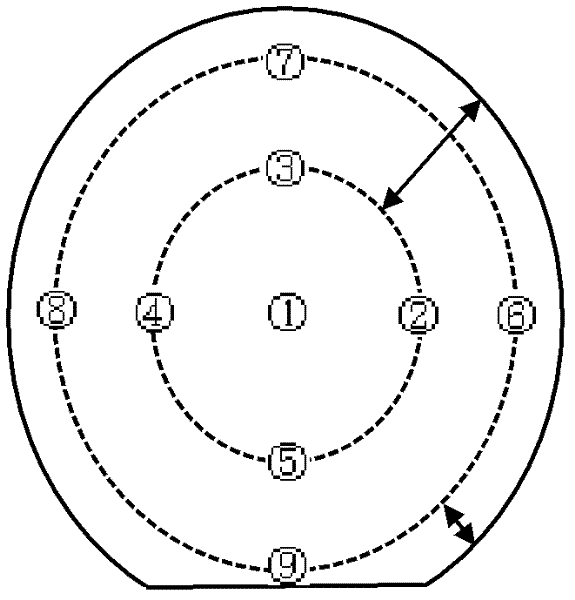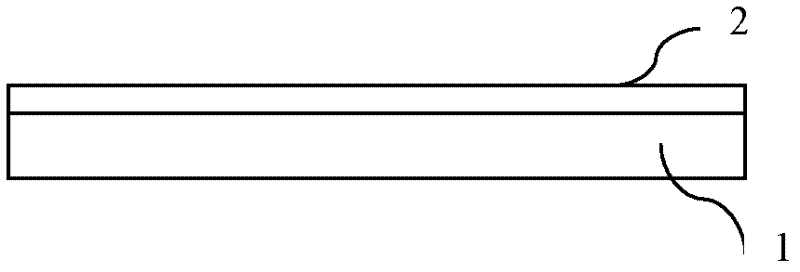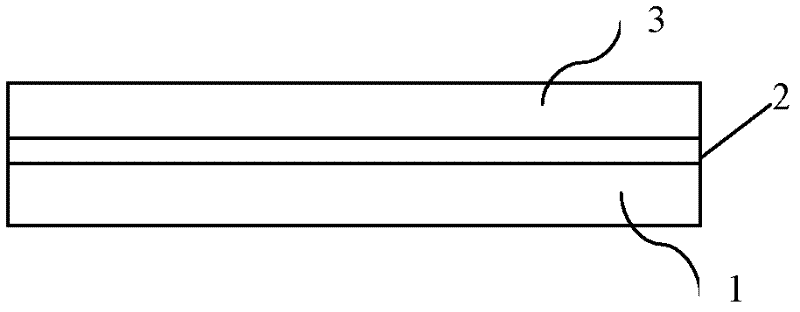Method for producing novel substrate, epitaxial wafer and semiconductor device
A production method and technology of epitaxial wafers, applied in semiconductor/solid-state device manufacturing, electrical components, circuits, etc., can solve the problems of reducing the resistance uniformity of the epitaxial layer, the value of resistivity uniformity is difficult to reduce, and the resistivity uniformity is low , to achieve a steep SRP curve, reduce subsequent production costs, and improve product quality
- Summary
- Abstract
- Description
- Claims
- Application Information
AI Technical Summary
Problems solved by technology
Method used
Image
Examples
Embodiment 1-4
[0034] Such as figure 2 As shown, the new type of substrate includes a substrate body 1 with a single crystal silicon layer 2 on the surface of the substrate body 1. The thickness of the single crystal silicon layer 2 is 2-5 μm. The specific thickness can be determined according to the overall thickness of the epitaxial wafer and the thickness of the substrate body. The higher the substrate thickness, the thicker the single crystal silicon layer. In subsequent production, an epitaxial layer is grown on the surface of the single crystal silicon layer 2.
[0035] The substrate body 1 may be N-type, that is, doped with arsenic, phosphorus, or antimony; the substrate body 1 may also be P-type, that is, doped with boron.
[0036] Embodiments 1-4 are all heavily arsenic-doped substrate bodies. In Embodiments 1-4, 2 μm, 2.6 μm, 3.5 μm, and 4.8 μm single crystal silicon layers are respectively arranged between the substrate body and the epitaxial layer.
[0037] In Examples 1-4, the mono...
Embodiment 5-8
[0039] image 3 It is a schematic diagram of the structure of the epitaxial wafer in Examples 5-8. Examples 5-8 use the substrates in Examples 1-4, respectively. Such as image 3 As shown, an epitaxial layer 3 is formed on the surface of the single crystal silicon layer 2. The monocrystalline silicon layer 2 is located between the substrate body 1 and the epitaxial layer 3.
[0040] In Comparative Examples 1-4, the substrate body is a heavily arsenic-doped body, and no single crystal silicon layer is provided between the substrate body and the epitaxial layer.
[0041] The comparison data of the resistance uniformity of the epitaxial layer of Examples 5-8 and Comparative Examples 1-4 are shown in Table 1-4. In each group of comparisons, two substrate bodies produced in the same batch are selected, one is provided with a monocrystalline silicon layer and then the epitaxial layer is grown; the other is directly grown with the epitaxial layer. The epitaxial layer growth process is ...
Embodiment 9
[0053] Two heavily phosphorus-doped substrate bodies produced in the same batch were selected, one was used in Example 9. The epitaxial layer 3 was grown after the monocrystalline silicon layer 2 was grown on the surface of the substrate body 1; the other was used in Comparative Example 5. The epitaxial layer is directly grown on the surface of the substrate body. The single crystal silicon layer 2 in Embodiment 9 is produced by reacting trichlorosilane with hydrogen. The reaction temperature is 960°C, and the hydrogen flow rate is 140 slm / s. The single crystal silicon formed by the reaction is deposited on the surface of the substrate body 1 to form a single crystal silicon layer 2. The single crystal silicon layer 2 has a thickness of 4 μm.
[0054] In Comparative Example 5, no single crystal silicon layer is provided between the substrate body and the epitaxial layer.
[0055] The epitaxial layer growth process in Example 9 and Comparative Example 5 are the same.
[0056] The ...
PUM
| Property | Measurement | Unit |
|---|---|---|
| thickness | aaaaa | aaaaa |
| thickness | aaaaa | aaaaa |
| thickness | aaaaa | aaaaa |
Abstract
Description
Claims
Application Information
 Login to View More
Login to View More - R&D
- Intellectual Property
- Life Sciences
- Materials
- Tech Scout
- Unparalleled Data Quality
- Higher Quality Content
- 60% Fewer Hallucinations
Browse by: Latest US Patents, China's latest patents, Technical Efficacy Thesaurus, Application Domain, Technology Topic, Popular Technical Reports.
© 2025 PatSnap. All rights reserved.Legal|Privacy policy|Modern Slavery Act Transparency Statement|Sitemap|About US| Contact US: help@patsnap.com



